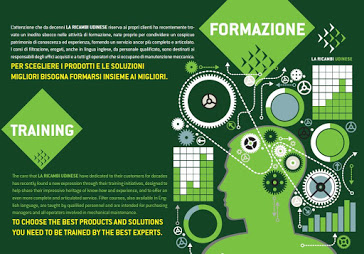Technical blog
FURNACE COOLING
The problem
Cooling system of external parts of a melting furnace in a steel foundry, is usually made with closed circuits where cooled water flows inside metallic tubes. To avoid that the water leaves limestone deposits, every more often is utilized demineralized water. This kind of water, has an high acid value and may result aggressive for the metal which the hoses are made of, especially if not particularly resistant to corrosion. A customer of us call us because he was experiencing a number of problems on valves and pump impellers on a furnace cooling system.

The cause
The fluid samples revealed immediately an high percentage of oxides, especially iron oxides (rust). Being harder than the most of the parts installed in the system, these oxides tend to become aggressive on parts of softer materials, as for example connection hoses in rubber, or pump gaskets. Oxides tend to act as an abrasive paste on most delicate parts as valves and pump impellers, for the erosion effect. The system, even if present a very good self-cleaning filter, wasn’t able to reach the desired contamination level. Self-cleaning filters, usually don’t go under 30um filtration level, for economic reasons and for dimensions. In this case the filter system was a 50um one. The result was that the water resulted polluted with a very high amount of small particles with dimensions included between 2 and 35u, principally due to a fragmentation of big oxide particles in ever more smaller particles, both for particles “banging around” the system walls during their course, and for breaking themselves passing through the filter metallic mesh.
The solution
Our solution , proposed after a gravimetric test, was to install after the self-cleaning filter, a candle process filter, capable to catch smaller particles up to a desired level, with an high retention level in grams, basing our solution and filter dimensioning on the fact that what we were looking at, was the result of years of system working in a closed circuit. In fact, after some frequent element changes of the new filter, due to clogging caused by the quantity of material in suspension, the element change started to slow down, ending to a very low frequency, maintaining the pollution level to a very low concentration. No more damages deriving by abrasion/erosion, have been reported.






